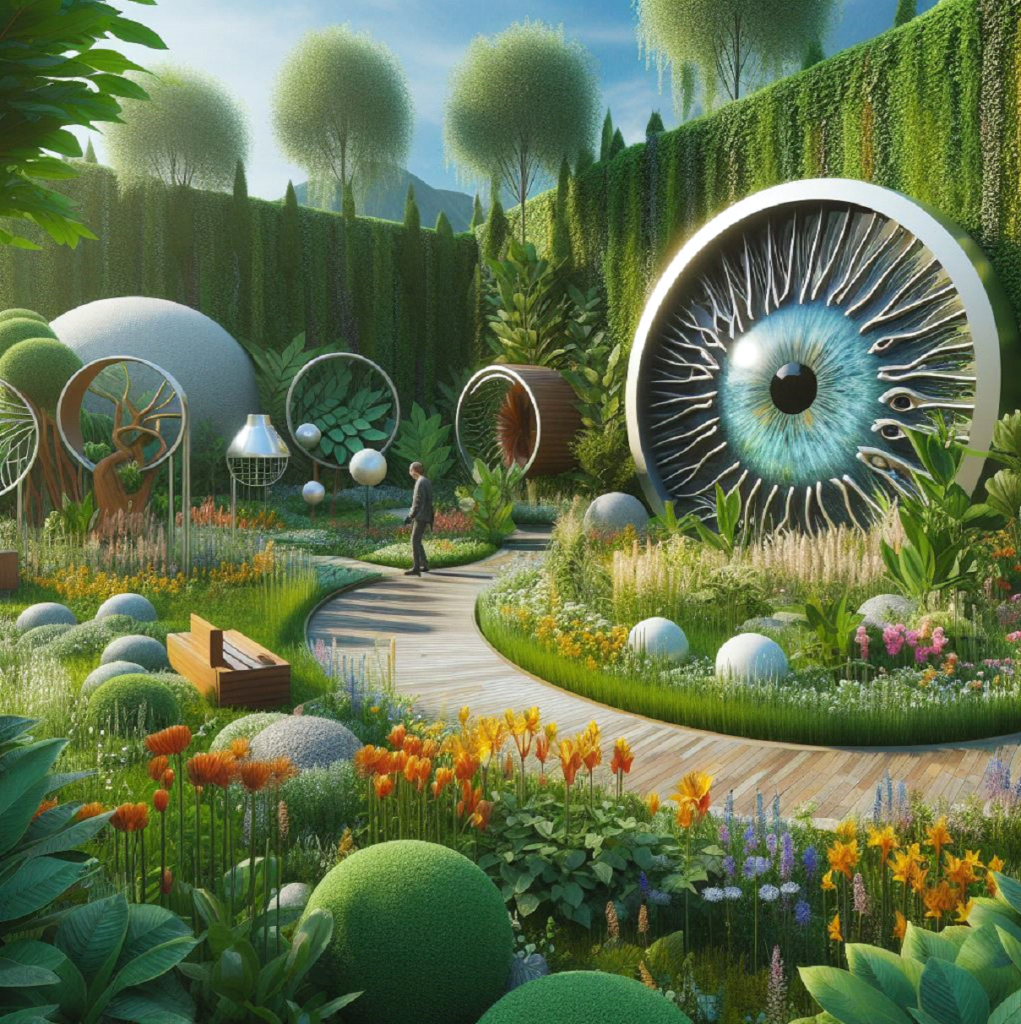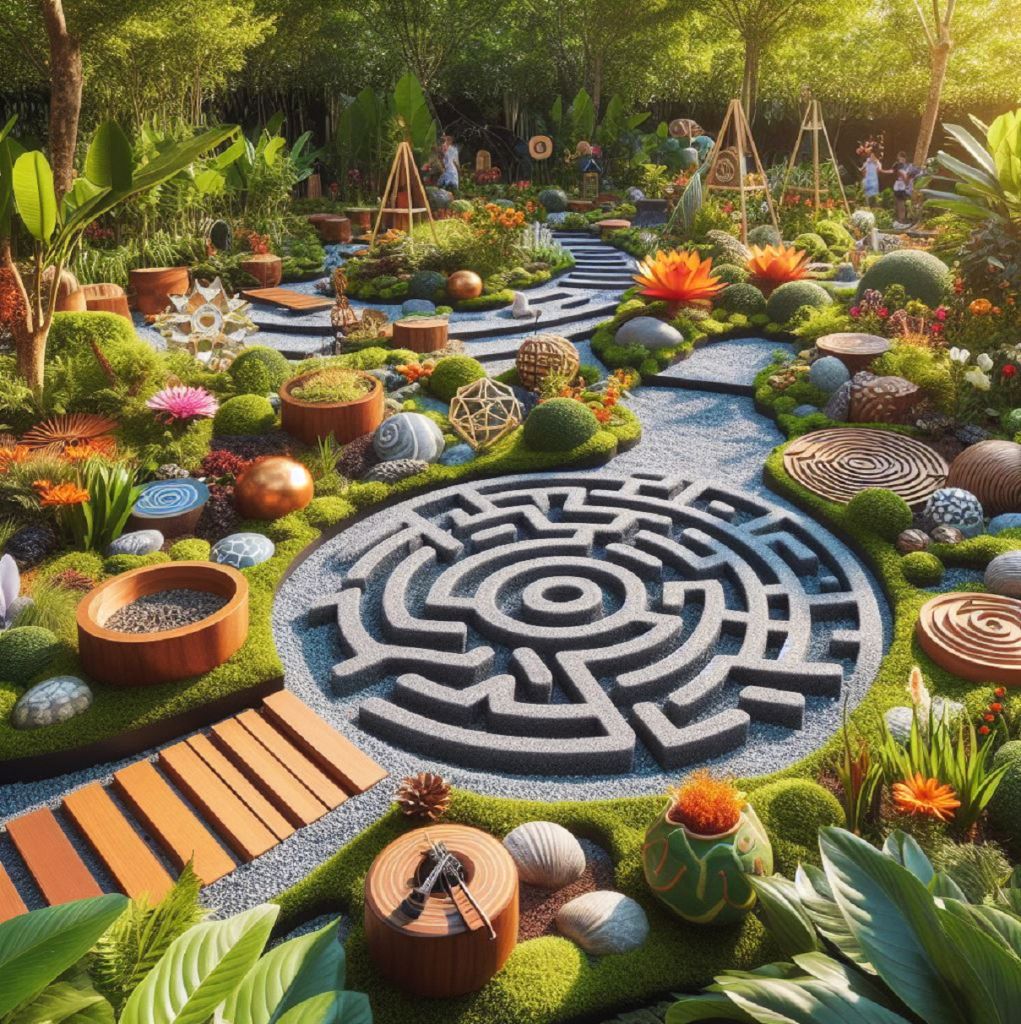Sensory Garden Design for the Visually and Mobility Impaired
In a world that mostly focuses on visual aesthetics, people are bound to not notice those usually overlooked but multisensory experiences that nature can offer. Sensory garden design is for visually and mobility impaired individuals and will provide an accessible environment for elderly and physically challenged individuals so that they can enjoy the beauty of nature through touch, scent, sound, and flavor. Thus, carefully implanting various aspects of these gardens will enhance the calmness, adding value to people’s lives and building up their appreciation of the beauty that can be found beyond direct vision.

Understanding Sensory Garden Design for the Visually and Mobility Impaired:
It does not limit itself to usual garden plans but embellishes them with components that not only stimulate the missing senses but also blend into an enriching and fascinating environment. This careful design of paths with raised planting areas and situated seating areas to meet the needs of people of all ages and disabilities provides a comfortable way for people to explore and experience nature.
Engaging the senses:
⦁ Touch: Tactile-natured materials like rugged trunks, smooth pebbles, and velvety roses evoke touching experiences that promote active engagement with the materials. Built-in planters and planning out certain plants for people to easily touch and feel the different textures and shapes of many of the plants are some of the ways visitors to the garden can interact.
⦁ Smell: Fragrance-hungry plants, like lavender, jasmine, and roses, are releasing their byotmaineon scent, enchanting us with a spiral path through the garden. Through careful plant selection and arrangements, visitors engage with the pathways by walking along them and experiencing the lovely aromas on the way.
⦁ Sound: Include babbling fountains, and chimes, or simply place a bird feeder cleverly to facilitate soothing music from nature and promote its melodies. The implementation of music adds a calming atmosphere and is beneficial to visitors who have a visual disability as it aids with their orientation.
⦁ Taste: Providing culinary options like herbs, fruits, and vegetables will infuse the visitors’ meals with nutritious foods from nature. Concave growing beds and convenient containers placed at heights for easy reach can be used by people with difficulty in movements, and, thus, during the food harvesting process, they can afford a taste as well.
Accessibility and Mobility Considerations:
Specific to sensory garden design for visually and mobility-impaired visitors, accessibility and navigation simplicity are the main principles. If the paved walkways are wide and flat, all the way with an even surface like smooth gravel or pavement, it welcomes wheelchair users, walkers, etc. to access and navigate.
To realize this, the seating areas need to be strategically placed along the path to provide some time off and places for rest, which are essential for visitors to spend their time absorbed in the various sensory experiences free from tiredness.
Inclusive Design Elements:
⦁ Braille and tactile signage: When providing information, labeling plants, features, and wayfinding in all sighted and blind people’s language in Braille and raised tactile signs, this makes it possible for people with visual impairments to fully participate in all that the garden has to offer.
⦁ Auditory cues: Include various auditory cues through recordings giving descriptions of plants or directional guidance, which will help visitors who are visually challenged have a better experience.
⦁ Contrasting colors and textures: employing colored and textural residues in walkways, planting fields, and seating areas, as well as other stuff such as low vision or color blindness.
⦁ Adaptive gardening tools: Taking into account adaptive equipment is an effective strategy for disabled gardeners, enabling them to participate in gardening comfortably and enjoyably. The provision of ergonomic pruners, long-handled cultivators, and elevated planting beds, among other equipment, helps the produce of these gardens go up.
Community Involvement and Education:
The landscape designs for physically and mentally impaired individuals, which go beyond physical spaces, are about planting communities not only geographically but also emotionally. Participating people with dissimilar capacities in the procedure ensures that their separately advantageous tasks and requirements are accepted. Also, apart from that, providing instructed tours as well as courses and educational programs can help people understand the value of nature and outside areas for everyone, and as a result, they will gain deep knowledge about the natural world.
Conclusions about Sensory Garden Design:
The concept of the sensory garden, which connects vision- and mobility-impaired people in a single forum that appreciates beauty in all its forms, is an unparalleled approach. For instance, taking care to include items that stimulate the senses and that make the gardens visually accessible to everyone with different abilities turns them into inclusive sanctuaries where people can connect with the outside, enjoy a better state of well-being, and be enchanted by nature. Through a united effort and prioritizing inclusion as a value, we can form outdoor environs embodied with inherent human imprints.

Αφήστε μια απάντηση